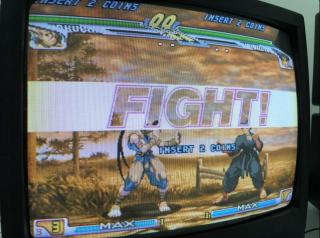Difference between revisions of "Screen deformations and sync issues"
| Line 9: | Line 9: | ||
=== UI menu top screen deformation === | === UI menu top screen deformation === | ||
| − | Some TV models are a bit special with the picture modes they can show, you can try to change the so-called Timings | + | Some TV models are a bit special with the picture modes they can show, you can try to change the so-called Timings on /boot/config.txt with the following line; |
| − | + | htmi_timigs=320 1 12 32 44 240 1 6 10 6 0 0 0 60 0 6400000 1 | |
| + | |||
| + | You can edit the file extracting the SD from the Pi and on Windows PC or any other os open the file and only change the first line, save and extract with security the SD, if the changes solve the issue thi is saved when you power down the Pi or Reboot with the menu options. | ||
Revision as of 21:58, 12 May 2020
Some monitors and TVs produce some kinds of image deformations. Next, we will see the most common scenarios and how to fix them:
In-Game top screen deformation
This deformation can be produced because some TV models do not accept intermediate frequencies between 50 and 60Hz well, it can be solved by applying a rounding to these frequencies available on the advanced menu ( ↑ ↓ ← → B B B Start )
Some TV models are a bit special with the picture modes they can show, you can try to change the so-called Timings on /boot/config.txt with the following line; htmi_timigs=320 1 12 32 44 240 1 6 10 6 0 0 0 60 0 6400000 1
You can edit the file extracting the SD from the Pi and on Windows PC or any other os open the file and only change the first line, save and extract with security the SD, if the changes solve the issue thi is saved when you power down the Pi or Reboot with the menu options.
